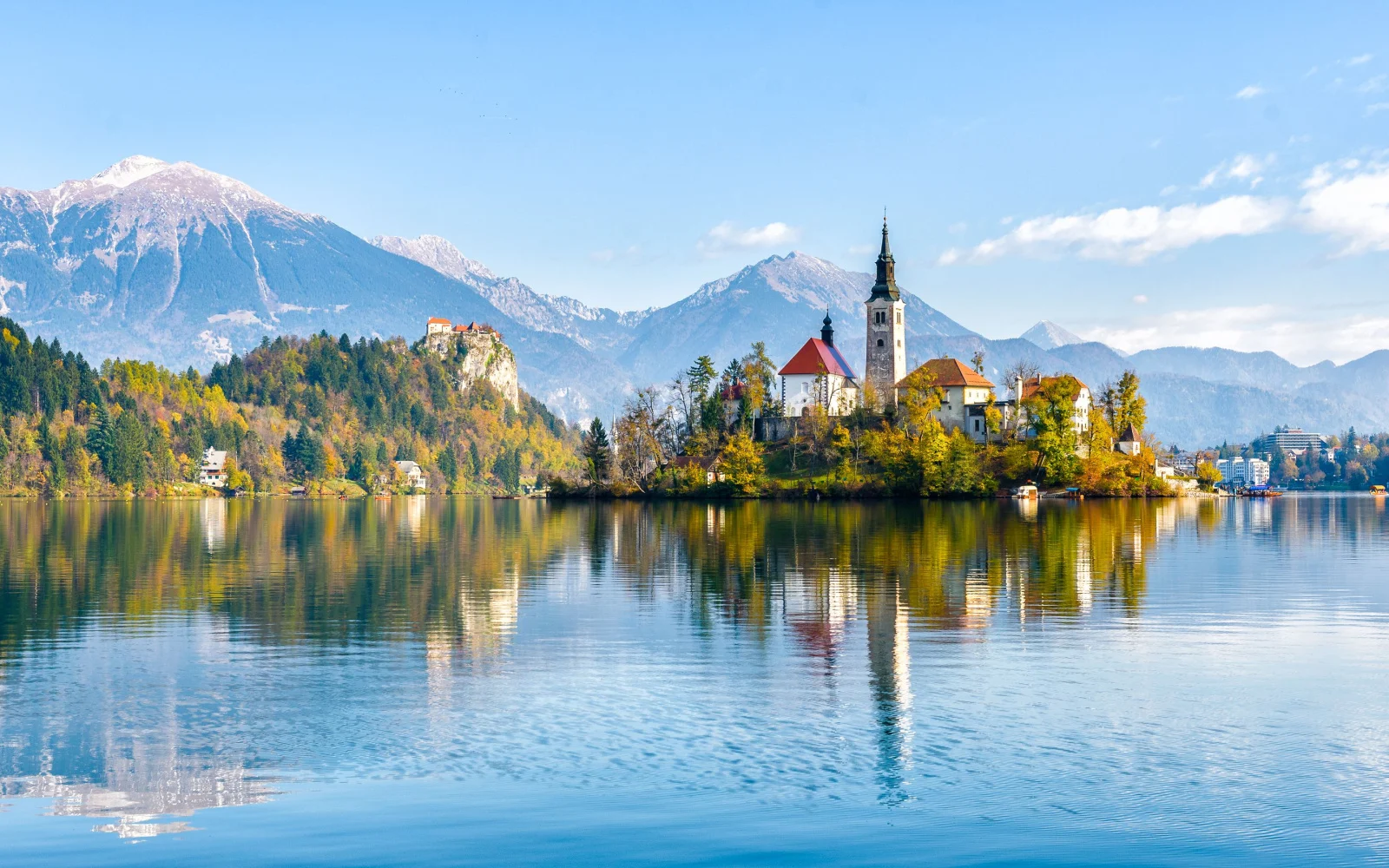Slovenia is fast losing its status as a hidden gem as more and more people are waking up to its charms. Slovenia receives about 6 million visitors annually, several times more than the country’s population!
Slovenia’s spectacular nature is the main draw for visitors to the country. You can see the picturesque Lake Bled or the spectacular peaks of Triglav. The Julian Alps are perfect for outdoor activities such as hiking or cycling.
Even Slovenia’s cities are full of charm, such as the capital, Ljubljana, which has colorful architecture and great cuisine.
Slovenia has something for everyone and hasn’t been overrun with tourists yet, so you’ll probably want to make your way there as soon as possible. However, before you plan your trip, it’s a good idea to look up practical concerns such as safety.
This travel guide can help you analyze whether or not Slovenia is safe to visit. Keep reading for more information about safety, including the crime rate.
Is Slovenia Safe to Visit in 2024?
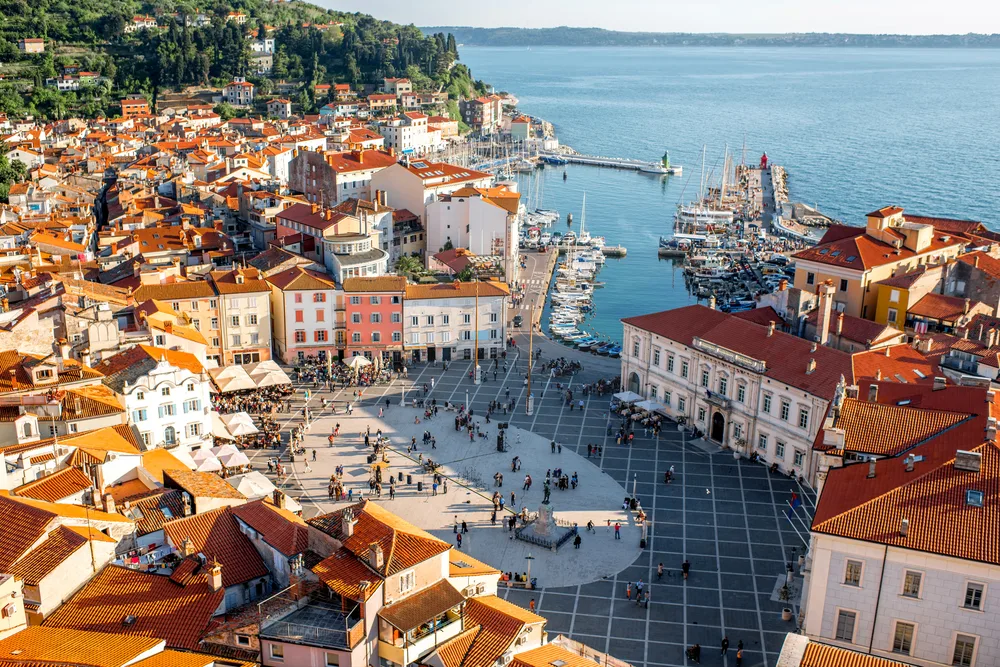
RossHelen/Shutterstock
Yes, you don’t need to worry about your safety when visiting Slovenia because it is one of the safest countries in the world!
This small Central European country has a very low crime rate, a stable economy and government, and very few threats to public safety.
Most international analysts rank Slovenia as one of the safest countries in Europe, sometimes even the world. For example, the Global Peace Index ranks Slovenia as the 8th safest country in the world! It earns this ranking thanks to its low crime rate and high rate of stability.
If you look at travel advisories for Slovenia, they tend to agree with the assessment that Slovenia is a very safe country. The United States places Slovenia under a Level One travel advisory, the lowest possible level.
Like most other governments, it advises its citizens to use basic precautions when visiting Slovenia, but otherwise not to worry that much. You may face problems in Slovenia, but they tend to be petty in nature.
The most common crimes include:
- Pickpocketing
- Purse snatching
- Fraud
- Vehicle break-ins
- Vehicle theft
Those who know a bit of local history will know that Slovenia used to be part of Yugoslavia, the communist country that suffered a bloody break-up in the 1990s. However, Slovenia was not affected by the wars that much.
Its war for independence lasted all of ten days and didn’t leave lasting scars on the society the way you may notice in other regional countries. You don’t have to worry about war or its consequences, such as land mines, while visiting.
Most people visit Slovenia with the goal of exploring the spectacular mountains, including the Julian Alps. If you are hiking, skiing, or engaging in any other outdoor activities, make sure that you follow safety procedures.
The UK government warns its citizens in its travel advisory to make sure that they don’t go on routes that are too difficult for their abilities as some hiking trails, such as the Via Ferrata, have very challenging sections.
You don’t want to find out halfway through a trail that it is too much for you, so be realistic about your capabilities. The official Slovenian tourism board also offers some safety tips for exploring the mountains.
To stay safe:
- Check the weather forecast in advance.
- Bring the right equipment, such as sturdy hiking boots, layers, and plenty of water and food.
- Always tell someone where you are going.
- Stick to marked trails.
- Estimate that hiking in winter will take twice as long as in other seasons due to snow and ice on the trails and plan accordingly.
The Alpine Association of Slovenia has safety tips for skiing and exploring the mountains in winter when weather conditions make the outdoors even more unpredictable.
Make sure you check avalanche conditions ahead of time, wear a ski helmet, and spread out your group to prevent causing an avalanche.
Crime in Slovenia
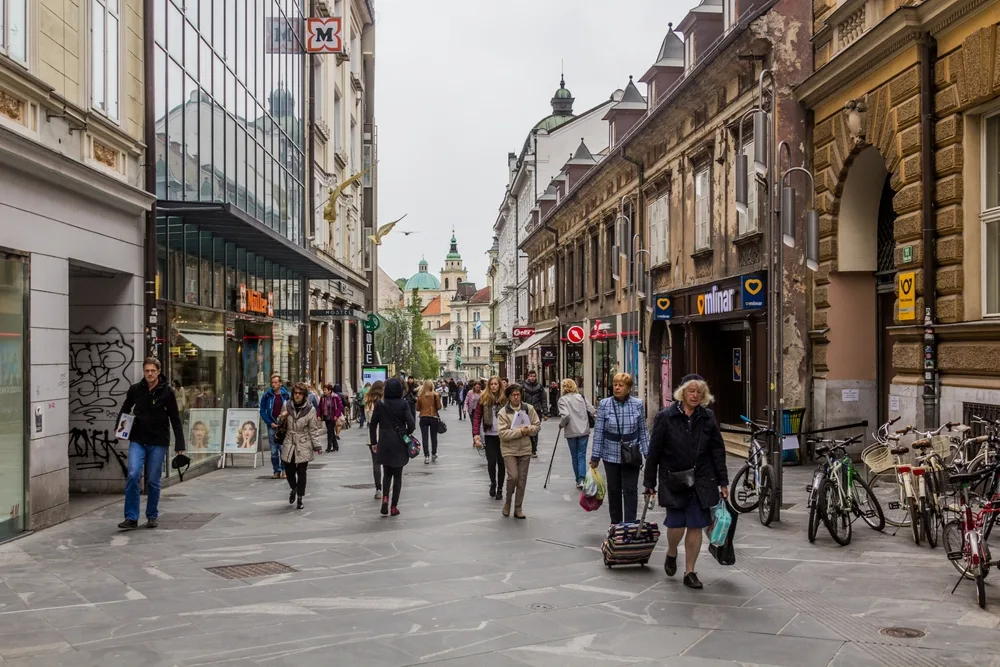
LJUBLJANA, SLOVENIA – MAY 14, 2019: Pedestrian Copova street in Ljubljana, Slovenia/Matyas Rehak/Shutterstock
In the absence of other threats to your safety, you might be wondering about the crime situation in Slovenia. After all, it won’t be a fun vacation if you have to clutch your purse to you wherever you go.
The good news is that Slovenia is extremely safe. It has a very low crime rate and an even lower violent crime rate. While you should still take some precautions to prevent petty theft in crowded tourist areas, you won’t have to be on your guard constantly and can enjoy your vacation.
The overall rate of crime in Slovenia is fairly low. According to the Republic of Slovenia Statistics Office, the rate of people convicted of a crime in Slovenia is just 2.8 people per 1,000. If the rate of convictions is so low, then it shows that the rate of criminal activity is also low.
According to the same government office, the most common crime in Slovenia is larceny or theft. About 20% of convictions each year are due to larceny, and theft makes up the biggest proportion of crimes against property, which is the biggest category of overall crimes committed.
Fraud is the second-most common type of crime and property crime. The low rate of violent crime is even more comforting. According to statistics obtained from the World Bank, the homicide rate in Slovenia is just 0.42 incidents per 100,000 people.
Homicides are extremely rare in Slovenia. When homicide rates are low, the rate of other violent crimes is also low. Like many other places, Slovenia experienced a slight rise in crime and convictions over the past two years.
However, this rise is easily explained by political circumstances. Like much of the world, Slovenia had strict lockdowns to prevent COVID-19 in 2020 and parts of 2021. Once these lockdowns ended, there were more opportunities for crime, so crime increased.
However, crime has been leveling off. Of course, Slovenia is not a perfect country. According to the Organized Crime Index, Slovenia has problems with state and media capture by corrupt entities and white-collar crime. It is also an important transit country for drug trafficking.
However, these are all problems that almost never affect tourists to Slovenia (unless you go looking for trouble, in which case you will probably find it).
Vehicle Break-Ins
One of the most common crimes that occurs in Slovenia is vehicle break-ins. This is a crime of opportunity—criminals notice that a car is vulnerable to theft and take advantage of a moment of inattention.
The Canadian government warns about the prevalence of theft from vehicles and vehicle break-ins affecting travelers in Slovenia.
Thieves often target gas stations and service areas along the highways, where they know there will be a lot of tourists, and overnight parking lots and street parking.
Luckily, a few basic precautions are usually enough to prevent this crime. One important precaution is to avoid leaving valuables in your car, even for just a few minutes. If you are stepping out of your car to go pay for gas and leaving your vehicle unattended, take your purse, wallet, and other valuables with you.
You never know what might happen while you are distracted and away from your vehicle. Take precautions when parking your car for a longer period. Double-check that you locked the doors and rolled up all the windows so thieves don’t have easy access.
Don’t leave any possessions visible in your car — either store everything in the trunk or try to leave your items in the hotel before exploring. For overnight parking, make sure that you are parking in a secure area with cameras and other safety precautions.
Slovenia has excellent public transportation, and it is easy to travel even to more remote areas via train or bus. If you want to avoid the hassle of renting a car, you can still see much of the country and avoid the risk of theft from vehicles.
Pickpocketing
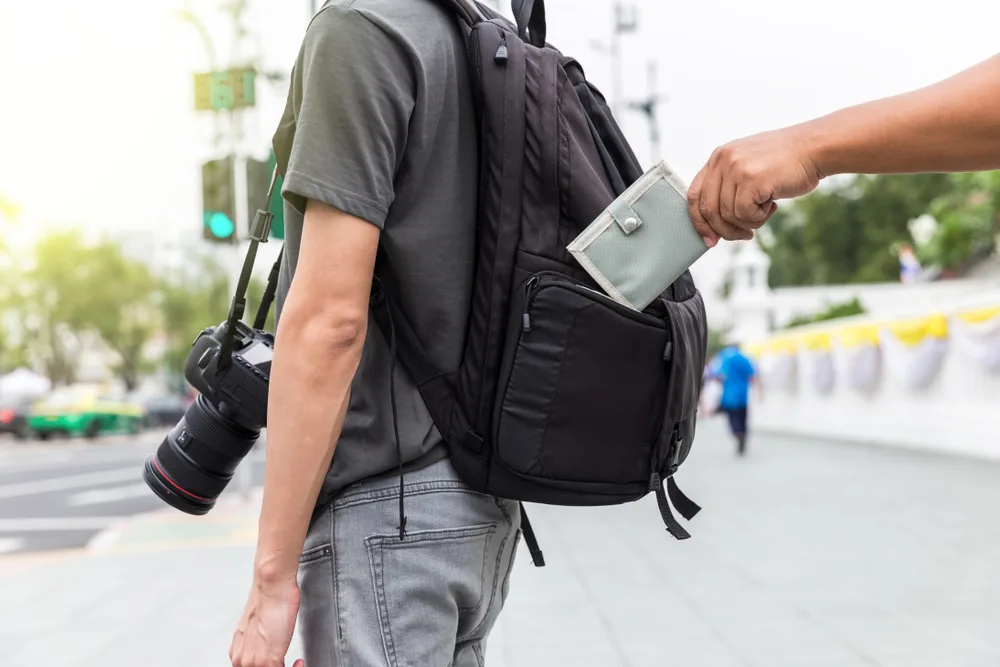
onsuda/Shutterstock
As mentioned above, theft is the most common crime in Slovenia. While the rate of petty theft and pickpocketing is not as high as it is in some other problems, this crime does occur. The Australian government even mentions the risk of it in its travel advisory for Slovenia.
Pickpockets and purse-snatchers tend to operate in areas that are popular with tourists. Be careful of your possessions around the narrow streets of Ljubljana’s Old Town, the buses to Lake Bled, and along the coast.
Thieves often lurk along Slovenia’s short stretch of beaches and steal unattended items. Thieves sometimes operate on intercity buses and trains, especially at night when people are sleeping. Luckily, deterring thieves in Slovenia is easy enough with basic precautions.
First of all, don’t leave your valuables unattended. No matter where you are in the world, if you leave your purse on your chair in the restaurant when you go to the bathroom or your wallet on your beach chair while you are swimming, there is a strong possibility that it will not be there when you get back.
Put your possessions in a secure place. When you are walking in a crowded area, make sure that your valuables are protected, whether they are in a hard-to-reach bag pocket, in your front pants pocket, or in a purse tucked under your arm.
You want to make it hard for someone to take your things without you noticing. Although theft can happen, the rate of it affecting tourists is low enough that you can avoid it with some precautions.
Avoiding Bad Areas
Slovenia is so safe that there aren’t any places that are so bad that you need to avoid them! Slovenes point out some neighborhoods and towns, usually on the outskirts of Ljubljana, that have a sketchier reputation, including Fužine, Rakova Jelša, and Žabjak.
However, a lot of this bad reputation is based on stereotypes, as these neighborhoods are home to large populations of immigrants from other Balkan countries who are looked down upon in Slovene society.
As in any other European city, the area around the main train station is a bit sketchy at night, but the worst you might experience is some theft (or a mugging, if you are really unlucky).
Things to Consider
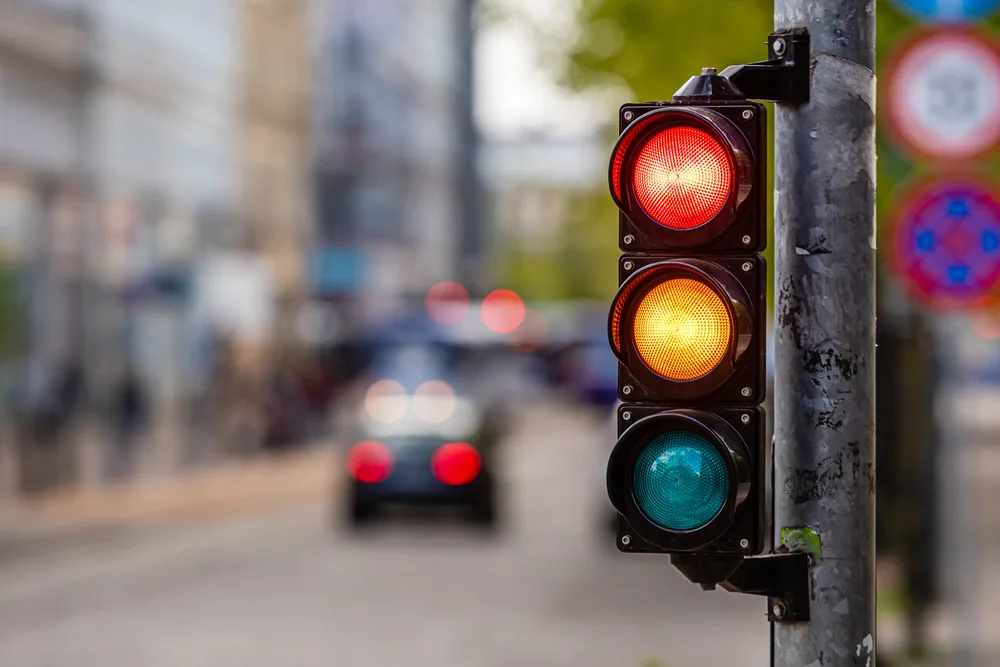
ako photography/Shutterstock
Here are a few additional safety tips for visiting Slovenia:
- Follow driving regulations if you are renting a car. Check if your international driver’s license is valid in Slovenia. If you are bringing your own car, you will need winter tires for part of the year. You have to have your headlights on at all times.
- Avoid shady areas at night. While most of Slovenia is safe, you don’t want to explore dark alleyways and unknown parts of town after dark.
- Prepare for the winter. Winters here can get very cold, thanks to the Alpine climate. If you are visiting in the winter months, bring warm layers and check the weather before heading outside.
Frequently Asked Questions
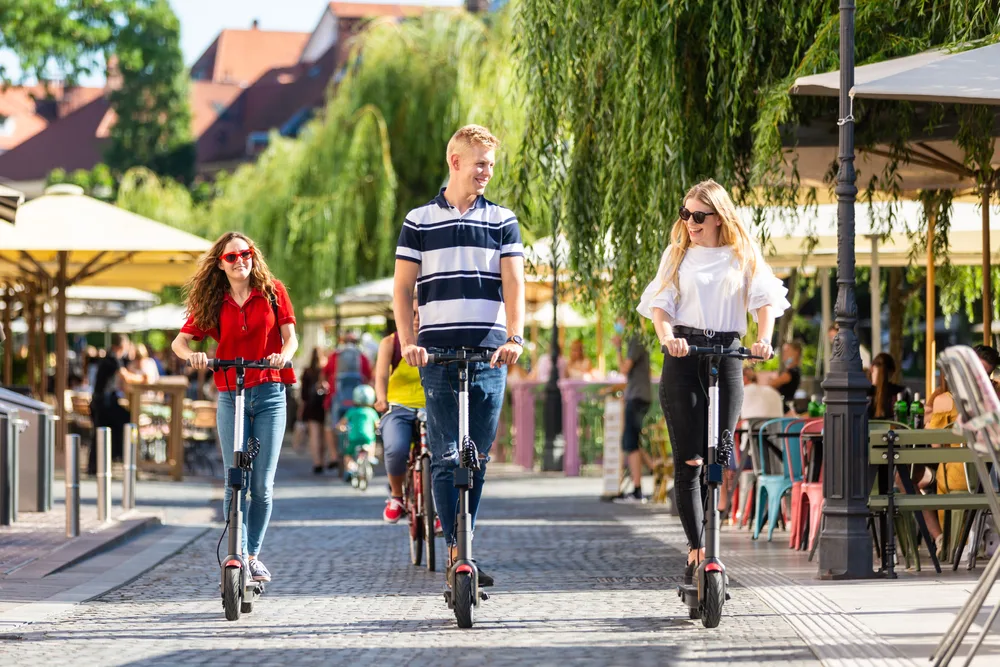
Matej Kastelic/Shutterstock
Here are some common questions that people have asked before about visiting Slovenia:
Is Slovenia friendly to tourists?
Yes, Slovenia is friendly to tourists. Not only are the people friendly and welcoming, but the country has excellent tourist infrastructure.
Is it safe to go to Slovenia right now?
Yes, it is safe to go to Slovenia right now, like at all other times. The country is very safe and has been for many years.
Is Croatia safer than Slovenia?
Slovenia is safer than Croatia. It has a lower crime rate and the benefit of not having many legacies of war, while parts of Croatia still have landmines.
Is Slovenia friendly to foreigners?
Most Slovenes are friendly to foreigners, especially tourists. However, some parts of Slovenia have prejudices against foreigners, especially people from other Eastern European countries or visitors with darker skin.
Is Slovenia more beautiful than Croatia?
The answer depends on your definition of beauty! Croatia has a longer and more beautiful coastline, but Slovenia’s mountains are higher and more attractive.
Over to You — Book Your Trip Today!
Slovenia is not just a wonderful country to visit but also a wonderfully safe country to visit. Problems in the country are limited to some petty theft and some winter weather.
So, with so much to see and do and a relatively safe atmosphere, what are you waiting for — book your trip today and experience for yourself all that Slovenia has to offer. Happy travels!



